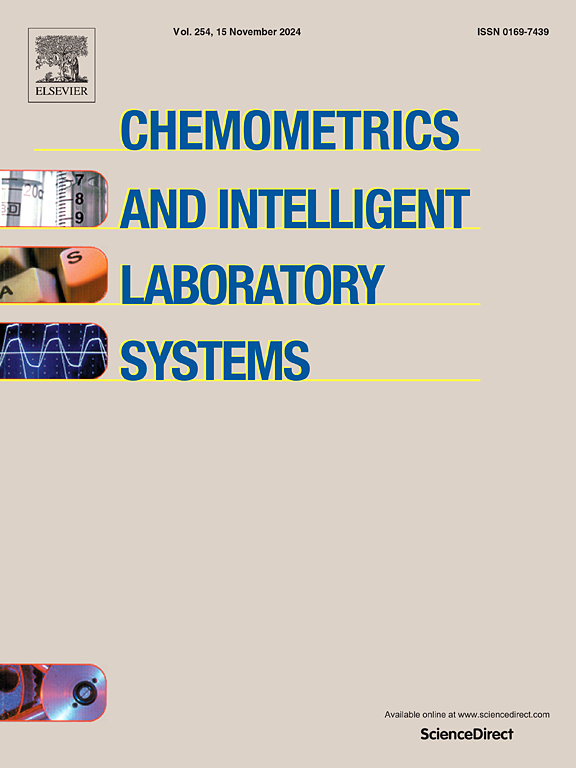Measurement uncertainty and risk of false decisions for similarity factor (f2): Boostrapping method or spreadsheet?
IF 3.8
2区 化学
Q2 AUTOMATION & CONTROL SYSTEMS
Chemometrics and Intelligent Laboratory Systems
Pub Date : 2025-06-27
DOI:10.1016/j.chemolab.2025.105475
引用次数: 0
Abstract
The similarity factor (f2) is a key metric to compare generic and reference drug and to obtain biowaivers of bioequivalence studies of Active Product Ingredient (API) in dissolution testing. Yet, its statistical limitations - including low power and undefined confidence levels - restrict its reliability. Therefore, Bootstrapping is a widely used approach for establishing Confidence Interval for f2. Nevertheless, this approach is not user-friendly for non-statisticians, and to obtain the uncertainty related to the risk assessment of the f2 in the dissolution testing requires additional steps. In this investigation, we propose the Kragten spreadsheet method as a practical alternative to Bootstrapping approach in the evaluation of the consumer's risk. Comparative analysis was performed under six scenarios of API's, involving reference/test drugs and registered/new formulations. All six groups met regulatory criteria (f2>50 %), while 95 % confidence intervals from both statistical methods showed agreement, confirming methodological reliability. Despite all groups achieved the f2>50 %, the range obtained through Bootstrapping and Kragten methods determined that three scenarios (A, C, and E) presented elevated consumer risk (>5 %), highlighting limitations of f2 alone. Also, the differences between both methodologies were measured. For Bootstrapping, 50 iterations per 10.000 simulations showed no statistically significant differences from Kragten (p > 0.05), establishing method equivalence for symmetrical dissolution data. The findings advocate combining f2 with uncertainty analysis for risk assessment in dissolution testing.

测量不确定度和相似因素错误决策的风险(f2): Boostrapping方法还是电子表格?
相似因子(f2)是溶出度试验中比较仿制药和参比药以及获得活性产品成分(API)生物等效性研究的生物豁免的关键指标。然而,它的统计局限性——包括低功率和未定义的置信水平——限制了它的可靠性。因此,Bootstrapping是一种广泛使用的建立f2置信区间的方法。然而,这种方法对非统计学家来说并不友好,并且在溶出度测试中获得与f2风险评估相关的不确定性需要额外的步骤。在这项调查中,我们提出了Kragten电子表格方法作为一个实用的替代方法,在消费者的风险评估Bootstrapping。比较分析了6种原料药的情况,包括参比/试验药和注册/新制剂。所有六组均符合监管标准(f2> 50%),而两种统计方法的95%置信区间显示一致,证实了方法的可靠性。尽管所有组都达到了f2>; 50%,但通过Bootstrapping和Kragten方法获得的范围确定了三种场景(A, C和E)的消费者风险升高(> 5%),突出了f2单独的局限性。此外,还测量了两种方法之间的差异。对于Bootstrapping,每10000次模拟50次迭代与Kragten (p >;0.05),建立对称溶出度数据的方法等效性。研究结果主张将f2与不确定度分析相结合进行溶出度检测的风险评估。
本文章由计算机程序翻译,如有差异,请以英文原文为准。
求助全文
约1分钟内获得全文
求助全文
来源期刊
CiteScore
7.50
自引率
7.70%
发文量
169
审稿时长
3.4 months
期刊介绍:
Chemometrics and Intelligent Laboratory Systems publishes original research papers, short communications, reviews, tutorials and Original Software Publications reporting on development of novel statistical, mathematical, or computer techniques in Chemistry and related disciplines.
Chemometrics is the chemical discipline that uses mathematical and statistical methods to design or select optimal procedures and experiments, and to provide maximum chemical information by analysing chemical data.
The journal deals with the following topics:
1) Development of new statistical, mathematical and chemometrical methods for Chemistry and related fields (Environmental Chemistry, Biochemistry, Toxicology, System Biology, -Omics, etc.)
2) Novel applications of chemometrics to all branches of Chemistry and related fields (typical domains of interest are: process data analysis, experimental design, data mining, signal processing, supervised modelling, decision making, robust statistics, mixture analysis, multivariate calibration etc.) Routine applications of established chemometrical techniques will not be considered.
3) Development of new software that provides novel tools or truly advances the use of chemometrical methods.
4) Well characterized data sets to test performance for the new methods and software.
The journal complies with International Committee of Medical Journal Editors'' Uniform requirements for manuscripts.

 求助内容:
求助内容: 应助结果提醒方式:
应助结果提醒方式:


